|
|
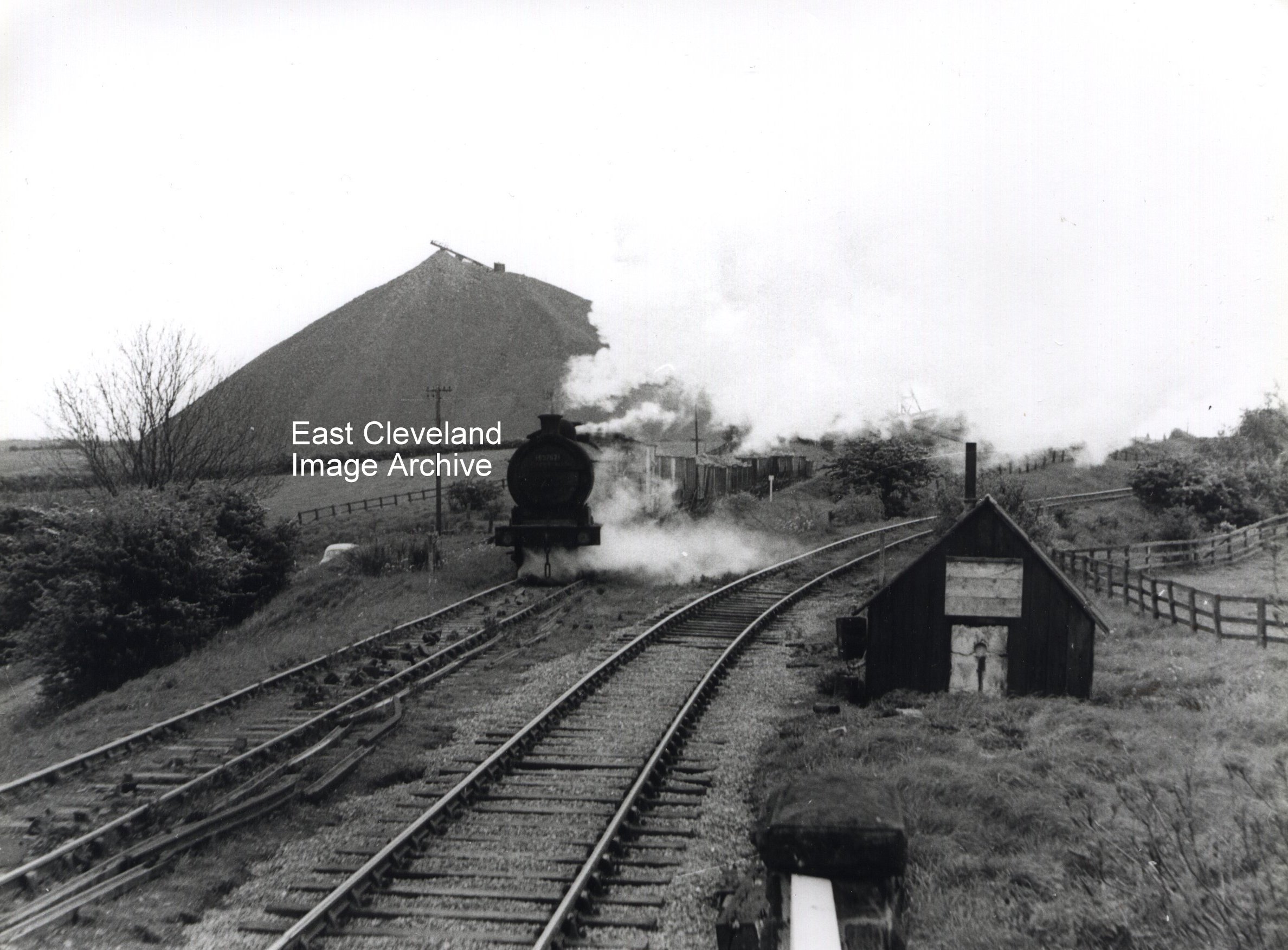
Taken about 1957 of a loaded train from Kilton Mine approaching Lingdale Junction; the Lingdale Mines branch is the one curving to the right and was extremely steep. Simon Chapman told us: “Look carefully at the train and you’ll see the brake van is behind the engine, not at the back of the train. This was allowed in later years because the gradient was down all the way to Brotton, where the engine ran round to reverse the train before taking it to Tees-side. In place of the brake van at the end of the train a lamp or red flag was hung on the back of the last wagon to show to signalmen at Kiltonthorpe Junction and Brotton that the train was complete i.e. a wagon hadn’t been derailed and lost on the way.” Also of interest is the shale spoil ‘hill’ on the left of the image; this is now one of the few remaining hills of excavated spoil from the ironstone mines of East Cleveland; South Skelton being another such reminder. Alan Featonby suggests: “It is possible this photograph was taken on 21st May, 1959. A similar photograph appears in ‘Stephen Chapman’s book Railway Memories No. 18 Cleveland and Whitby’ attributed to Ken Hoole. If so, the locomotive is Class J26 65762 of Thornaby shed. The car by the coal drops is the give away.”
Image courtesy of the Pem Holliday Collection and many thanks to Simon Chapman, Peter Appleton and Alan Featonby for the updates.
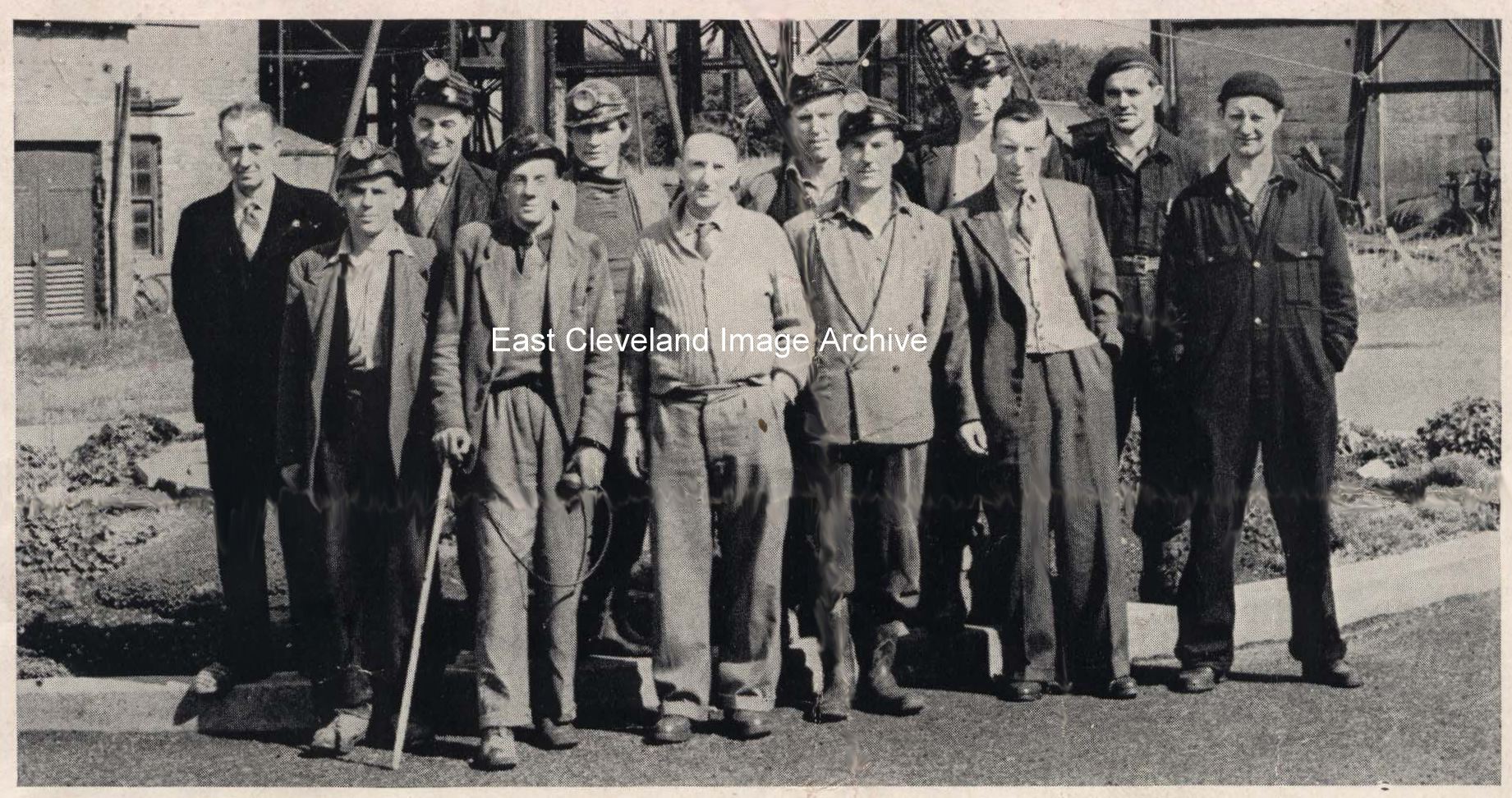
Pictured we have; back row (left to right): William Beadnall (joiner), Raymond Edwin Johnson (back overman), Ivan Zagrovic, Raymond Brown (loaderman), Edward Dove (loaderman), Wladislaw Wnek (fitter).
Front row: G. Woodall (haulage hand), John Robert Carter (senior overman), Andrew Turnbull (mine manager), Dennis Pearson (deputy mine manager), Edward Bendall (loaderman – buried under the rockfall), Frank Morris (head locomotive fitter). The team also received the Queen’s Commendation for Brave Conduct.
Derick Pearson advises: “My father is the deputy on here Dennis Pearson; each of these men got Laurel Leaf medals (which I still have) presented to them by Sir Anthony Eden. The article was published in the London Gazette on 3rd of July 1956 and each man got a certificate”. Ryan Zagrovic tell us: “My grandad was Ivan Zagrovic on there unfortunately I didn’t get to meet him”. Pam McVay adds: “W. Beadnall lived on Lorne Terrace, Brotton; he was our neighbour but until now did not know about this, people kept quiet about their achievements in those days!”.
Image from a collection compiled by Derick Pearson, thanks to Derick Pearson, Ryan Zagrovic and Pamela McVay for the updates. Also thanks to Chris Twigg for additional christian names, work positions and additional inforamtion.
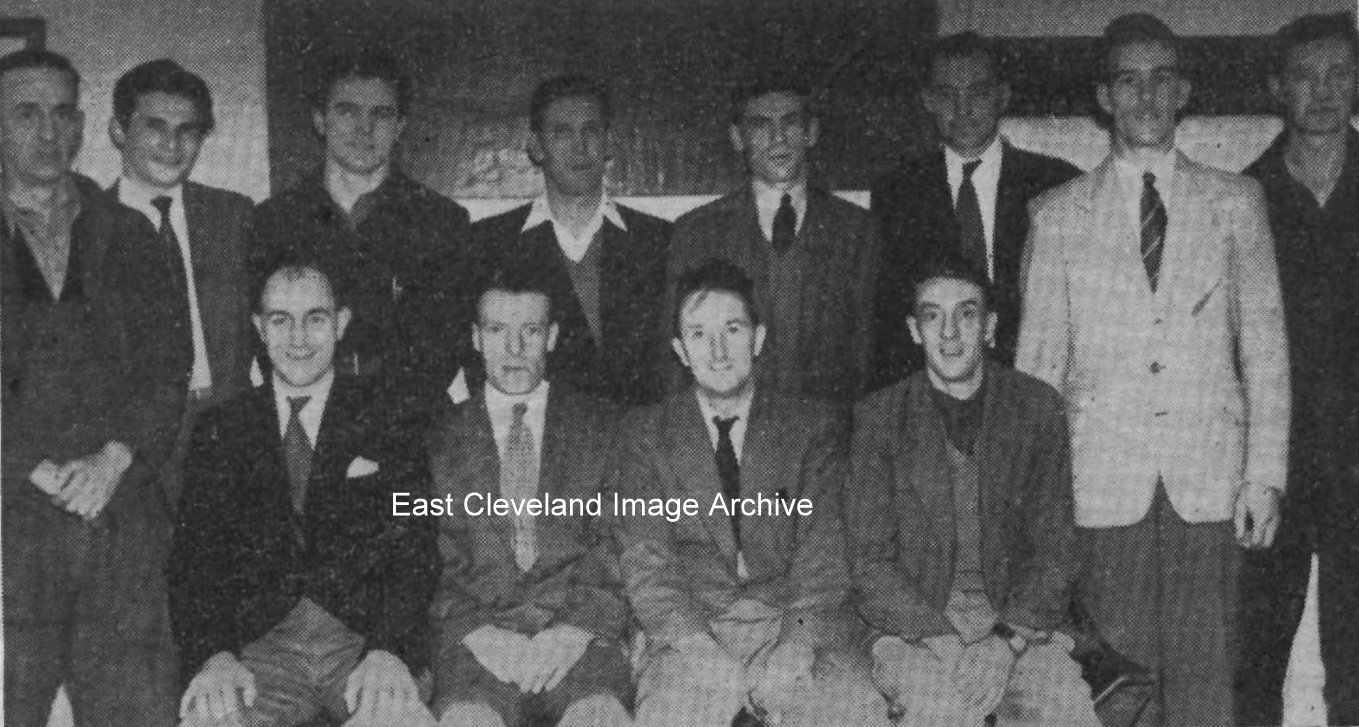
From a newspaper cutting, the men from Kilton Mine rescued Edward Bendall. Edward was trapped in a roof-fall at the mine January 13th 1956 and were awarded the Queen’s Commendation for Brave Conduct. Carole Zagrovic tells us: ”Second from left on the top row is my dad Ivica ‘Ivan’ Zagrovic – it was my Grandmother who went to London to collect the medals – in a little red box with white satin – two small silver pins of leaves”. Derick Pearson adds: “My father and the other members of the rescue team went to London to be presented with the medals by Sir Anthony Eden”.
Image from a collection compiled by Derick Pearson, thanks to Carole Zagrovic and Derick Pearson for the updates.
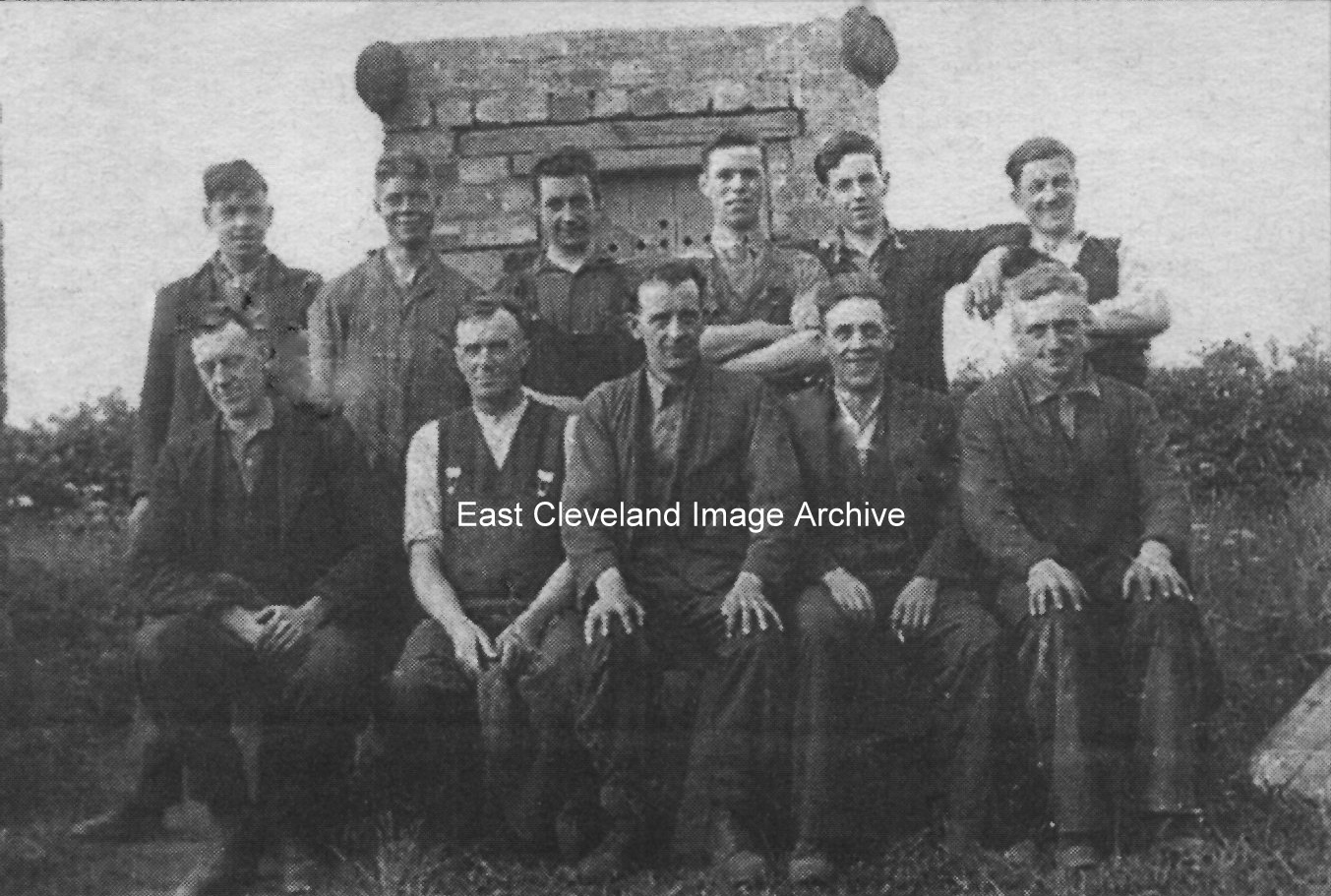
The image is taken from an Evening Gazette ‘Remember When’ article from a newspaper cutting of 1940 and shows the surface workers. Some can be identified from the article: but can anybody assist with additional names?
Back Row: ?? , Percy Gott, ?? , Les Marsay, ?? , ?? .
Front Row: ?? , Bert Hicks, ?? , Bill Young, ?? .
The cutting came from a collection compiled by Derick Pearson.
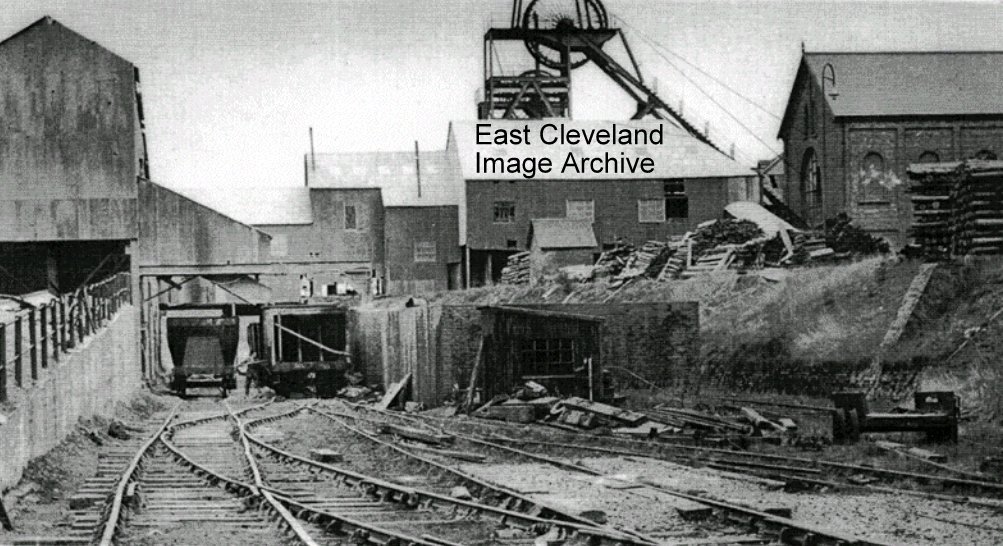
A very busy looking photograph of Lingdale mine; looking down the ore loading track, picking belt to the left. Downcast shaft with the big wheels and beside it the engine house, lots to see here.
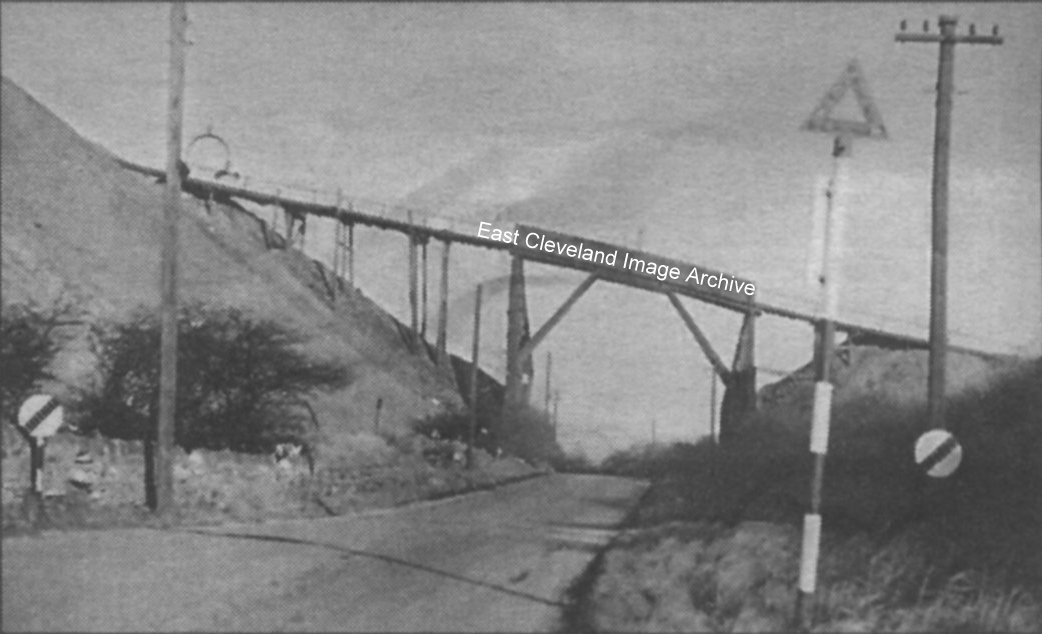
A lovely clear photograph of Claphow Road with Stone catching bridge demolished in the 1950’s; but when in the 1950’s ? Any advice is welcome.
George Searle tells us: “I remember my sister Enid and I walking under this and one of the buckets over tipped spilling its load onto the road just in front of us. After that each time we walked down the road we made sure that no full buckets were crossing overhead.”
Alan Etherington advises: “I recall standing just about where the photographer was standing waiting for a bus to Gerrick. Later in life, 1961, I worked on a building site on Lakes Estate, Redcar, when I was straight out of school and one Horace Marson was said to have bought the vast spoil heap and was using it to fill in the footings of the houses being built. So the bridge would have gone by then.”
Thanks to George Searle and Alan Etherington for the updates.
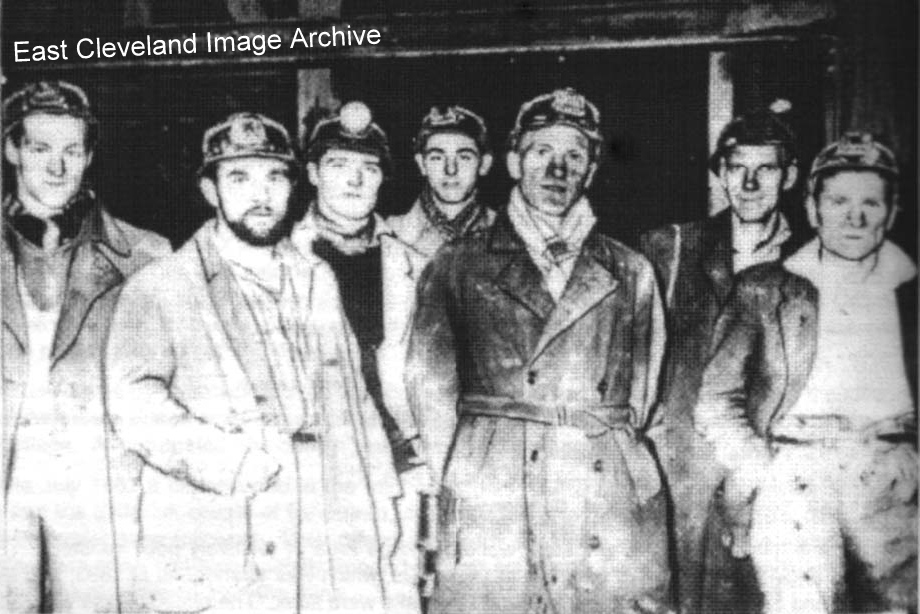
We asked: ”Can anyone name any of the men coming off the last shift at Lingdale Mine in 1962?” Natasha tells us: ”My Grandad Ernie Thompson second from right.”
Many thanks to Natasha and Peter Appleton for the for the updates.
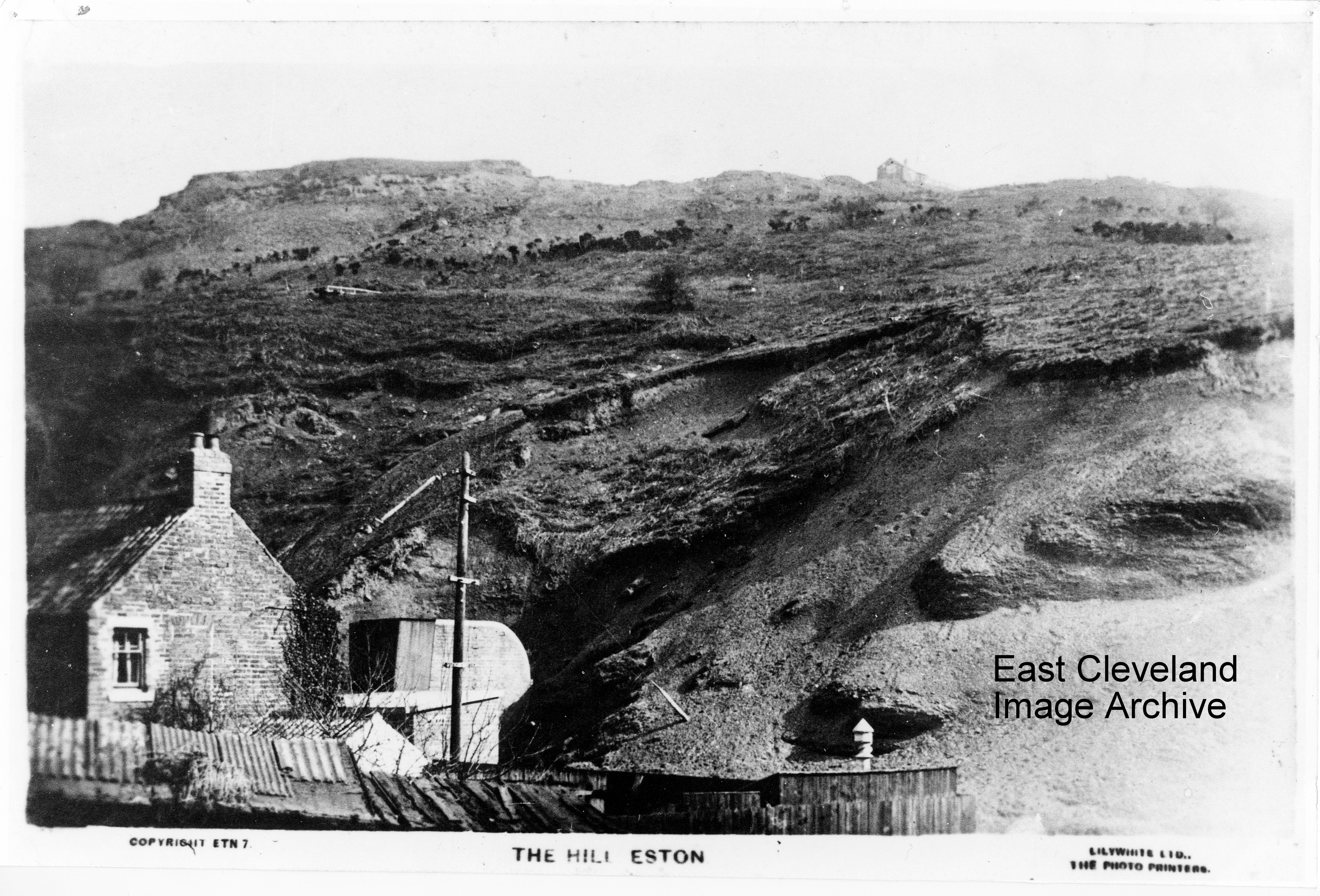
Not alive with the sound of music, but more alive with the sound of mining. This postcard view by Lilywhite Ltd, shows the Eston Hills long before the present day ‘Parkway – A174’ roadway was even thought about!
Image courtesy of Cleveland Ironstone Mining Museum.
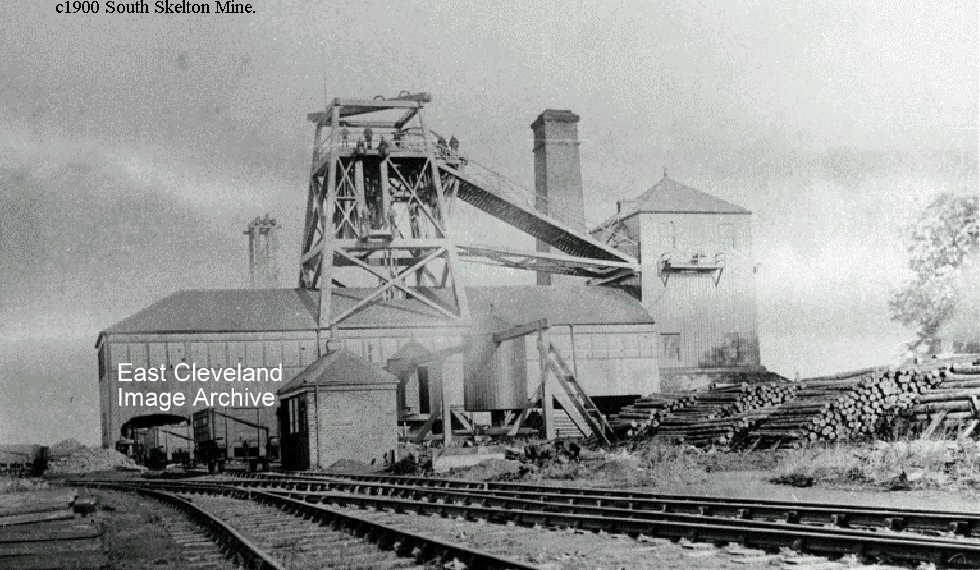
South Skelton Pit (or Van’s Pit as it was locally known – after the owner – Thomas Vaughan) is sited between Boosbeck and Margrove Park. A nicely compact pit, this image shows the winding shaft and engine house built over and onto the heapstead. The two strange dovecot-type structures in the centre foreground are horse-gins used for working the winding shaft when engineering work was required below. Not much remains today, the mine manager’s house, two overmen’s houses, the stables and the engine house are about all I can bring to mind. The shale heap at Margrove Ponds Nature Reserve was waste from the mine and the pond itself was caused by subsidence from the mine.
Image courtesy of the Pem Holliday Collection.
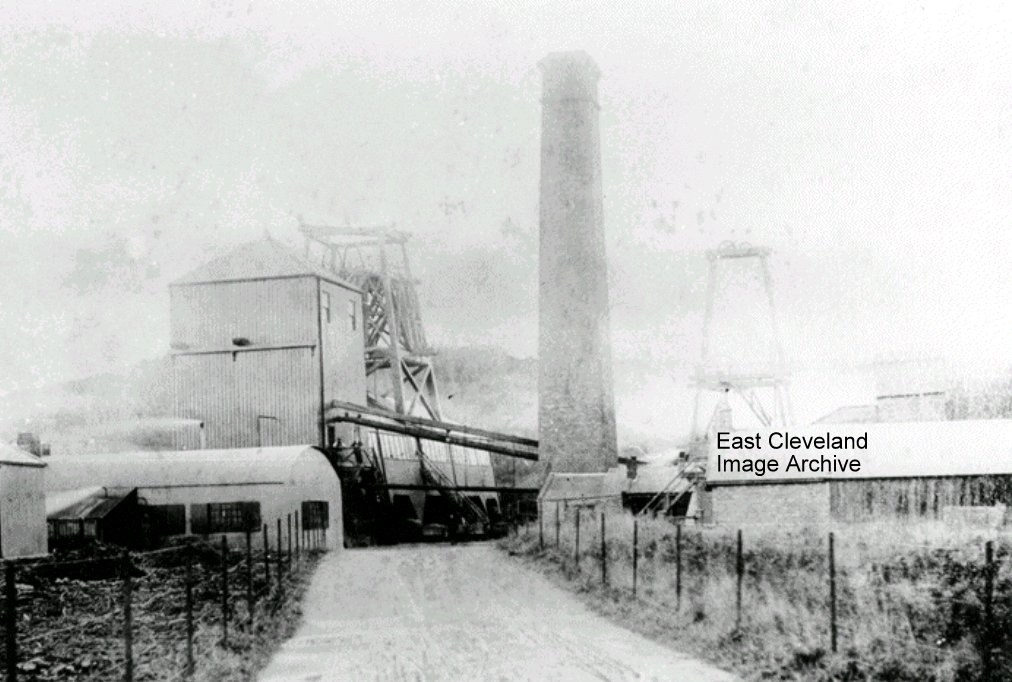
South Skelton mine is shown in the image and Simon Chapman advised us: “The mine was electrified 1912 – 1914, so the picture was taken before those dates.”.
Image courtesy of Mike Holliday and thanks to Simon Chapman for the update.
Page 19 of 21« First«...10...1718192021»
|
|










Recent Comments